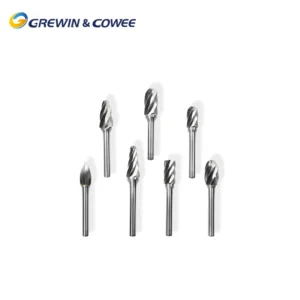Table of Contents
ToggleGrinding Carbide Burr
When it comes to precision machining, woodworking, or automotive repairs, the right tools can make a world of difference. One such crucial tool is the grinding carbide burr. Whether you’re a professional tradesperson or a DIY enthusiast, knowing how to choose the right grinding carbide burr can enhance your projects and save you time and effort.
Understanding Grinding Carbide Burrs
A grinding carbide burr is a rotary cutting tool made from tungsten carbide, designed for high-performance material removal. These burrs are diverse in shapes and sizes, making them suitable for various applications—from sculpting wood to refining metalwork. When looking to purchase a grinding carbide burr, it’s essential to consider several factors to ensure you select the best one for your specific needs.
Determine Your Project’s Material
Before diving into the selection process, consider the materials you’ll be working with. Different materials require different burr types for optimal performance. For instance, if you are working on a hard metal such as stainless steel, a grinding carbide burr with a finer grit and more durability becomes necessary. This will allow you to achieve a remarkable finish without excessive wear and tear on the tool.
On the other hand, if you are working with softer materials like aluminum or wood, a burr with a coarser grit may suffice. For example, a single-flute carbide burr is ideal for quickly removing large amounts of material from softer substrates, while a double-flute burr will offer a smoother finish on harder metals.
Shape and Size Matter
Grinding carbide burrs come in various shapes and sizes, each serving a different purpose. For instance, ball-shaped burrs are excellent for creating concave surfaces and holes, while cylindrical burrs excel at flattening surfaces and sharpening edges.
Consider your project’s specific requirements. If you’re refining intricate details on a piece of artwork or model, a small, tapered burr would offer the precision needed for fine work. Conversely, if you’re looking to prepare a surface for welding, a larger, flat burr would be much more effective.
Consider the Rotation Speed
The rotation speed of the tool plays a significant role in the effectiveness of a grinding carbide burr. Most burrs operate optimally at high speeds, delivering efficient material removal while minimizing tool wear.
For example, when working on metal, using a high-speed rotary tool can enhance the performance of your grinding carbide burr, producing cleaner cuts and finishes. Conversely, when working on delicate materials like wood, a lower speed may prevent overheating and damage to the workpiece. Pay attention to the specifications of both the grinding carbide burr and your drilling or cutting tool to align their speeds for optimal results.
Choose the Right Type of Shank
The shank of a grinding carbide burr is just as important as the burr itself. Burrs come in various shank diameters to fit different rotary tools. Ensure the shank size matches the tool you are using. For example, a 1/4-inch shank burr will fit most standard die grinders, while smaller, 1/8-inch shank burrs may be better suited for intricate tasks that require precision tools.
Incorrect shank sizes can lead to vibrations, increased wear, and poor performance. Always cross-check your burr choice with your tool specifications.
Safety First
While a grinding carbide burr can significantly enhance your project’s efficiency, safety should always be a top priority. Always wear protective eyewear and a dust mask when working with these tools. The fine particles generated during grinding can be harmful if inhaled or if they come into contact with your eyes.
Additionally, securing your workpiece properly can help prevent accidents. Using clamps or vises can keep materials stable, allowing for more controlled cutting and shaping.
Evaluate Durability and Quality
Not all grinding carbide burrs are created equal. When purchasing, it’s essential to assess the quality and durability of the tool. High-quality burrs are more costly but often justify the price with longer life spans and better performance.
For instance, burrs made from premium carbide retain their cutting edge longer than those made from inferior materials. Although it might be tempting to choose a cheaper option, consider the long-term benefits of investing in a reliable grinding carbide burr.
Summary
In conclusion, choosing the right grinding carbide burr involves careful consideration of your project’s material, the burr’s shape and size, rotation speed, shank type, and the quality of the tool. By making informed choices, you can greatly enhance the efficiency and quality of your work while also ensuring safety.
Investing in a high-quality grinding carbide burr tailored to your project specifics will not only improve the finished product but will also provide you with a tool that lasts for many endeavors ahead.
Ultimately, whether you’re a seasoned expert or just starting your DIY journey, mastering the selection of the right grinding carbide burr will pave the way for successful and satisfying results. Remember, the right tools make all the difference, so arm yourself with knowledge and harness the power of a well-chosen grinding carbide burr to elevate your project outcomes.

